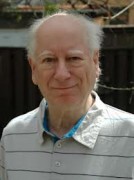After reading Ray Robertson’s book, Why Not? Fifteen Reasons to Live, Toronto filmmaker Alan Zweig thought that the complexity of life might be better understood by organizing it into neat and accessible categories. Animated by this idea, he sought out real-life stories that were at once applicable to Robertson’s concept and transportable to the screen.

15 Reasons to Live, which opened in Toronto earlier this month and is due to be broadcast by TVOntario in early 2014, is the felicitous result. Reaching poignant heights at times, the film matches categories with people. In each of the 15 brief episodes, his subjects achieve a measure of happiness or contentment in attaining or embracing their goals.
Love: A French Canadian man spent 10 years walking around the world to fulfill a pent-up need. His wife loved him enough to support his dream and endure loneliness in his absence. From time to time, they would meet in cities where his unusual journey had taken him.
Solitude: A busy mother requires space outside the cocoon of her home. She needs an environment where she can be absolutely alone and achieve a sense of calm. She walks to a mall, where she watches people come and go. It seems like a trivial pursuit, but it works for her.
Critical Mind: A teen-aged girl stirs indignation in a school when she refuses to kiss a picture of Jesus. Fellow students ostracize her, but she stands by her principles. She’s an independent thinker, come what may.
Art: The novelist Howard Engel, having lost his ability to read following a stroke, makes a slow and painful recovery after submitting to therapy. But is he the man he was before disaster struck?

Individuality: A car buff loves his shiny toys, all the more so after a series of odd and puzzling incidents.
Home: When she was 17, she fell in love with a light house. By chance, the light house keeper invited her to visit. She never left, even after her partner died. She knew what she wanted and she considers herself lucky.
Work: A Chinese immigrant in Canada turns his life around when he becomes a message therapist. He has never been happier or experienced such peace of mind.
Humor: Adam Nobody, a Torontonian with a funny name, is beaten up and arrested by police during a demonstration. His case gains traction in the media, possibly due to his surname. He can see the levity in the situation.
Friendship: Friends rally around a man in his mid-50s who’s been stricken by a terrible disease. They help his family and take turns reading to him in his hospital room. He’s amazed by the level of support. A mountain climber, he wants to reclaim his old life.
Intoxication: A young, attractive woman learns how to be happier by being less suspicious and not so closed to the world.
Praise: A music blogger finds the holy grail, happiness, after realizing that perfection is an illusory quest, a fool’s errand.
Meaning: The son of a bird enthusiast who keeps an aviary of finches in his house learns to love these birds and discovers the wonders of nature in the process.

Body: One day, rock sculptures suddenly appear in the middle of the Humber River in western Toronto. How did they get there? The sculptor who made them has learned how to channel rage into a constructive activity.
Duty: Whale watchers save a whale caught in a net. They could have left the whale to die, but they persevere. By way of appreciation, the whale puts on a grand performance in the water.
Death: The will to live, to cheat death, is a transcending force.
Zweig, whose previous documentary, When Jews were Funny, won an award at the last Toronto International Film Festival, ends 15 Reasons to Live with a moving personal note.